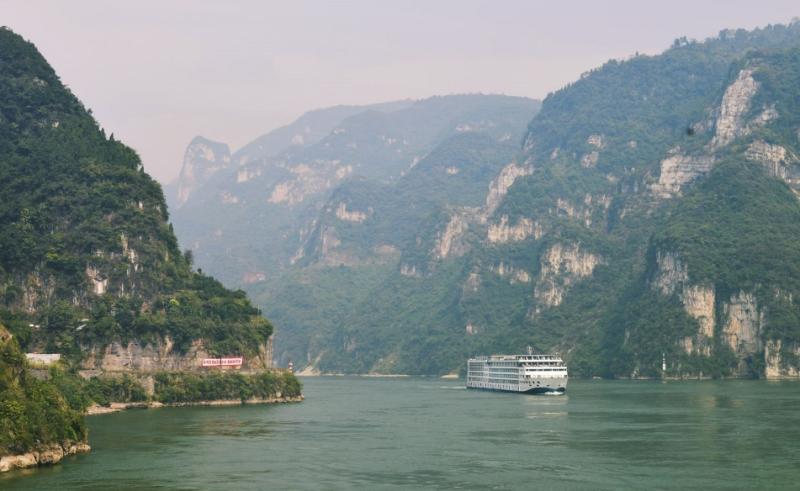Xiling Gorge

The Xiling Gorge of the Yangtze River
The Yangtze River, the mother river of the Chinese nation, has nurtured a brilliant civilization and witnessed the vicissitudes of history. Within the vast flow of the Yangtze, there is a rugged and magnificent gorge, known as the Xiling Gorge.
I. Geographical Overview of Xiling Gorge
Xiling Gorge, the easternmost section of the Three Gorges of the Yangtze River, is located in Yichang City, Hubei Province, spanning approximately 40 kilometers. It stretches from Nanjin Pass in Yichang City to Majiazui in Zhijiang County, also in Yichang. It is the shortest and most treacherous section of the Three Gorges.
Terrain and Topography: The Xiling Gorge boasts steep slopes on both sides, adorned with peculiar rocks. The narrow gorge is punctuated by rushing water.
- Towering peaks line the gorge, with Moki Mountain, reaching 1210 meters, standing as the highest. Its steep slopes ascend straight into the sky.
- The river surface at the bottom of the gorge is narrow, with the narrowest point measuring only a few hundred meters. The rapid current races through the gorge, creating a constant roar.
Hydrological Features:
- The Xiling Gorge features turbulent water flow and significant water level fluctuations. Particularly during the flood season, water levels rise rapidly, making the current even swifter, forming surging waves.
- The gorge is dotted with numerous rapids and treacherous shoals, such as Niugan Mafei, Yan Ti Dui, and Huangniutan, posing a considerable challenge to navigation.
Climate Conditions:
- Situated in the subtropical humid monsoon climate zone, Xiling Gorge experiences a mild climate with abundant rainfall and distinct seasons.
- The gorge is characterized by high humidity, lush vegetation, and fresh air.
II. Historical and Cultural Significance of Xiling Gorge
Xiling Gorge has historically been a strategic military location and an important transportation route, rich in historical and cultural heritage.
Historical Evolution:
- Ancient Times: Xiling Gorge served as a crucial military outpost for the Chu State. Successive dynasties stationed heavy troops to guard this strategic point.
- Modern Times: Xiling Gorge was a vital waterway for Yangtze River navigation and a key strategic location during the Anti-Japanese War.
Cultural Relics:
- Three Gorges Dam: Constructed downstream of Xiling Gorge, it stands as the largest hydroelectric project globally, providing essential support for China's economic growth and the well-being of its people.
- Qu Yuan's Hometown: Qu Yuan, a renowned statesman and poet during the Warring States Period, hailed from Zigui County, near Xiling Gorge. His birthplace is a significant cultural tourism destination.
- Wang Zhaojun's Hometown: The hometown of Wang Zhaojun, a famous consort during the Han dynasty, is located in Xingshan County, near Xiling Gorge. The area houses historical relics such as Wang Zhaojun's Residence and Temple.
- Three Gorges Inscriptions: Xiling Gorge houses a vast collection of ancient inscriptions, documenting historical events, legends, and figures, possessing immense historical and cultural value.
III. Tourism in Xiling Gorge
Xiling Gorge attracts numerous tourists with its unique natural scenery and rich historical and cultural heritage.
Natural Scenery:
- The Three Gorges of the Yangtze River: Xiling Gorge is the most magnificent section of the Three Gorges, featuring rugged and magnificent gorges, roaring river currents, creating a breathtaking spectacle.
- Three Gorges Dam: As the world's largest hydroelectric project, the Three Gorges Dam itself is a magnificent sight. Tourists can ascend the dam's viewing platform to overlook the panoramic view of the Yangtze River.
- Twelve Peaks of Wushan: The Twelve Peaks of Wushan are renowned attractions within Xiling Gorge. These peaks are rugged and picturesque, offering enchanting views.
Cultural Landmarks:
- Qu Yuan's Hometown: Tourists can visit Qu Yuan's Residence and Temple, learning about his life and works.
- Wang Zhaojun's Hometown: Tourists can explore Wang Zhaojun's Residence and Temple, experiencing the culture and history of the Han dynasty.
- Three Gorges Inscriptions: Tourists can admire ancient inscriptions, uncovering historical events and legends.
Modes of Exploration:
- Boat Tour: Visitors can embark on a cruise down the Yangtze River, appreciating the stunning scenery along both banks and experiencing the grandeur of the gorge.
- Hiking: Tourists can embark on hiking trails within the gorge, immersing themselves in the beauty of nature and enjoying the thrill of mountaineering.
- Sightseeing Bus: Tourists can opt for sightseeing buses to quickly explore the various attractions within the gorge.
IV. Future Development of Xiling Gorge
Xiling Gorge boasts unique natural and cultural resources, poised to leverage its strengths to foster tourism development in the future.
- Strengthening Ecological Environment Protection: Preserving the natural ecological environment of Xiling Gorge, safeguarding the integrity of its natural landscapes.
- Developing Distinctive Tourism Products: Introducing more unique tourism products to attract more visitors seeking immersive experiences.
- Improving Tourism Infrastructure: Enhancing transportation, accommodation, and catering facilities to enhance visitor experiences.
- Promoting Cultural Industry Development: Utilizing the rich historical and cultural resources of Xiling Gorge to develop cultural industries and boost local economic growth.
Xiling Gorge, the most rugged and magnificent section of the Three Gorges, bears the weight of history while harboring hope for the future. We believe that in the future, Xiling Gorge will become an even more significant tourist destination, showcasing the magnificent mountains and rivers and the profound cultural heritage of the Chinese nation to the world.